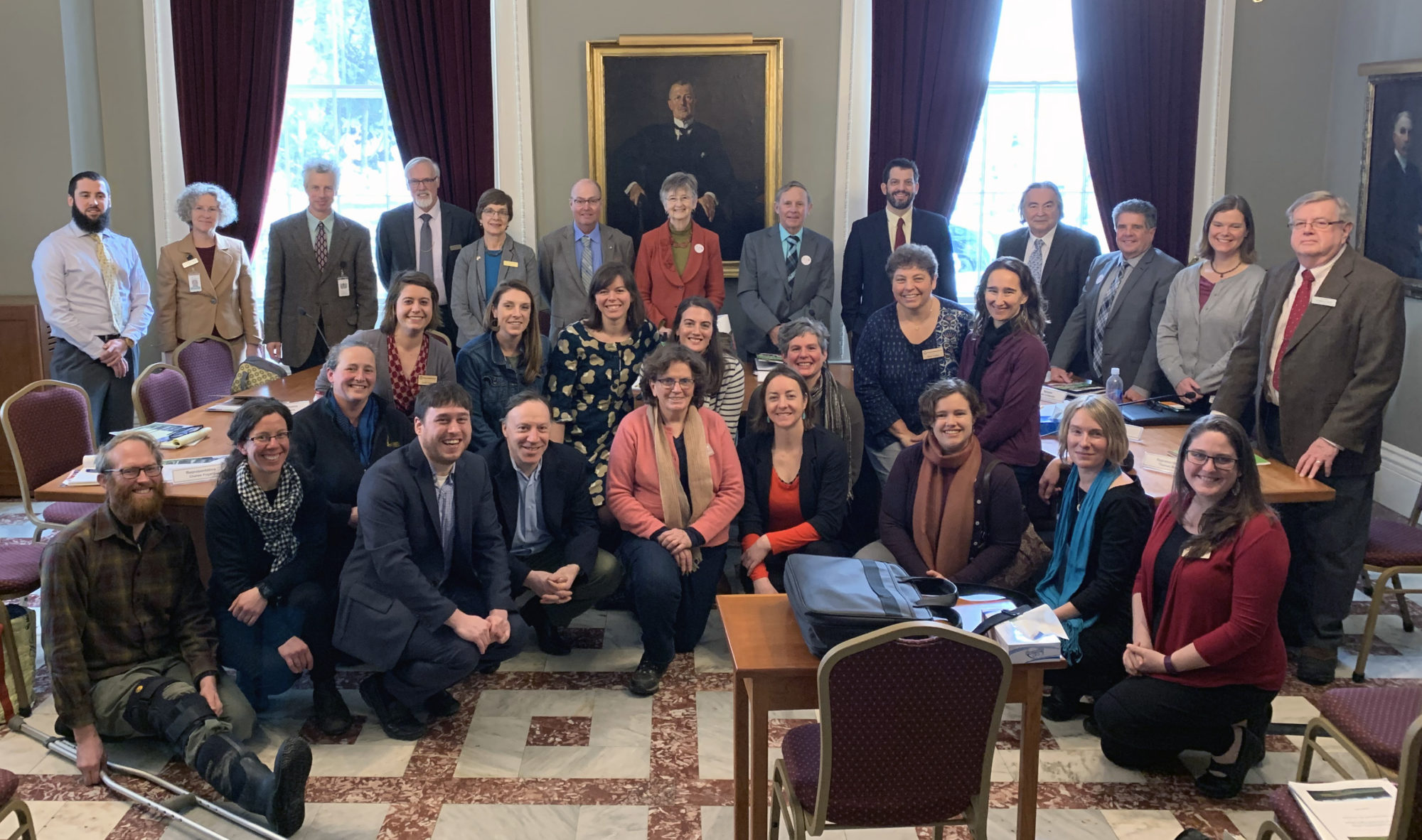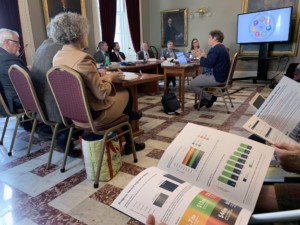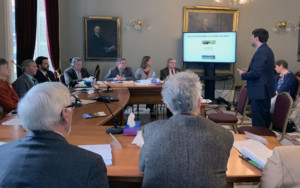Vermont Farm to Plate requests reauthorization from Legislature
January 22, 2019

2018 Farm to Plate Annual Report provides latest impacts of Vermont’s food system plan and lays out groundwork for continuing beyond 2020.
MONTPELIER, VT. – Representatives of the Vermont Farm to Plate Network and staff at the Vermont Sustainable Jobs Fund presented the 2018 Farm to Plate Annual Report to the Vermont Legislature’s House and Senate Agriculture Committees, requesting the Legislature reauthorize the Vermont Farm to Plate food system plan beyond 2020 to continue the work of growing the local food economy.
Signed into law by the Vermont Legislature in 2009 as the Farm to Plate Investment Program, the creation of Vermont’s Farm to Plate food system plan calls for increased economic development in Vermont’s farm and food sector, new jobs in the farm and food economy, and improved access to healthy local food for all Vermonters. Implementation of Vermont’s ten-year food system plan began in 2011 by the Farm to Plate Network—over 350 nonprofits, businesses, and government officials all working together to reach the goals of the plan.

Vermont Sustainable Jobs Fund Executive Director Ellen Kahler addresses the Vermont House and Senate Agriculture Committees.
The Vermont Sustainable Jobs Fund, a nonprofit organization committed to sustainable economic development, coordinates the Farm to Plate Network and is responsible for reporting the progress and challenges back to the Vermont Legislature in the Farm to Plate Annual Report.
Jake Claro, Farm to Plate director at Vermont Sustainable Jobs Fund, said as Farm to Plate concludes its eighth full year and approaches 2020, there is strong recognition major progress has been made in implementing priority strategies and achieving the objectives identified in the plan.
“We come to the Legislature not only to report on the latest year of progress, but also to ask to open a new chapter and decade of Farm to Plate’s existence by reauthorizing the Farm to Plate Investment Program for another 10 years,” said Claro. “Our hope is that this year’s Annual Report begins to outline the challenges, opportunities, and approaches Farm to Plate will focus on now and into the decade to come.”
Impacts of Success
Vermont has seen significant economic growth and development in Vermont’s food system since 2010:
- Economic Development: Purchases of local food products in Vermont have increased by $176 million to $310 million in total (13.9% of total food and beverage sales).
- New Jobs: Vermont’s farm and food economic sector employs more than 64,174 Vermonters, with 6,559 net new jobs and 742 net new businesses created.
- Food Access: The percentage of Vermont households that are food insecure has dropped from 13.2% to 9.8% in 2017, and charitable food and food access organizations have significantly improved availability of local food for Vermonters.
Over the course of Farm to Plate’s implementation efforts, Farm to Plate Network members surfaced new challenges and opportunities not identified in the original plan, many of which will require action beyond 2020.
“The relationships built within the Farm to Plate Network have been priceless,” said Jennifer Colby, Farm to Plate Network Product and Processing Working Group chairperson and UVM Center for Sustainable Agriculture Pasture Program Coordinator. “The strong foundation of using data to determine where we have come from, the coordination that has allowed us to connect with others doing aligned work now, and the action of bringing unlikely—but natural—partners together has energized our state to spring forward. Without Farm to Plate, we could never have accomplished what we have in the past eight years.”

Vermont Farm to Plate Director Jake Claro discusses the future of agriculture in Vermont and the request for the Legislature to reauthorize Vermont Farm to Plate to continue work beyond 2020.
Additionally, the report, “A 2018 Exploration of the Future of Vermont Agriculture: Ideas to Seed a Conversation and a Call to Action,” recently released by a number of Vermont food system thought leaders identifies Farm to Plate as a logical vehicle for carrying out the exploration and development of new strategies and ideas.
“What Farm to Plate can bring to the table is non-comparable to a state agency, and there is value to not being inside state government,” said Alyson Eastman, Deputy Secretary, Vermont Agency of Agriculture, Food and Markets. “Farm to Plate has more than demonstrated the importance of networking and within their work has taught the importance of working across sectors. There is no time like the present to continue the work of Farm to Plate; especially with the topics of business viability, marketability, climate change and ecosystem benefits at the forefront.”
Farm to Plate Network Priorities
The Farm to Plate Annual Report details progress and challenges central to reaching the legislative goals of Vermont’s Farm to Plate food system plan:
- Meeting Food System Employment Needs in Positive Work Environments
- Improving Viability and Financial Profitability of Farms and Food Businesses
- Increasing Local Food Availability and Affordability in All Market Channels
- Increasing Consumer Engagement and Demand for Local Food with Rooted in Vermont and Encouraging Vermont Product Sales and Labeling at Retail Stores
- Protecting and Expanding Affordable and Environmentally Sustainable Farmland in Agricultural Production
About Farm to Plate
Farm to Plate is Vermont’s food system plan being implemented statewide to increase economic development and jobs in Vermont’s farm and food sector and improve access to healthy local food for all Vermonters. The ten year Farm to Plate Strategic Plan (2011-2020) to create a viable, sustainable, and resilient food system to produce and distribute our food is being implemented by the Farm to Plate Network—over 350 farm and food sector businesses, non-profits, institutions, and government agencies from across the state. Farm to Plate is a program of the Vermont Legislature, administered by the Vermont Sustainable Jobs Fund, a nonprofit organization based in Montpelier, Vermont. www.VTFarmtoPlate.com




